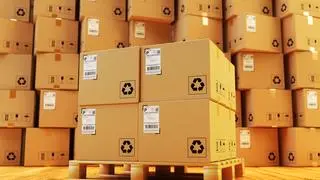Over time, bacteria have learnt to resist the drugs that are meant to kill them — antibiotics. Multi-drug resistant bacteria have been the nemeses of health authorities globally. For instance, multi-drug resistant tuberculosis (TB) remains a public health crisis — TB killed 1.5 million globally in 2020, according to the World Health Organisation, making it the 13th leading cause of death and second-most infectious killer after Covid-19.
Researchers at the Indian Institute of Science (IISc) are working on two approaches to tackle the problem — use bacteriophages, or ‘phages’, to kill bacterial cells; and block the transporters that ‘throw out’ antibiotics from bacterial cells.
Rachit Agarwal, assistant professor at the IISc’s Centre for BioSystems Science and Engineering, used bacteriophages — viruses that infect bacteria. They bind themselves to receptors on the bacterial surface, puncture the membrane and inject their own genetic material to make copies of themselves, which then burst out of the bacteria. From one bacteria, you could have hundreds of viruses ready to infect more bacteria.
Agarwal’s team focused on mycobacterium, which is drug resistant and commonly infects human lungs.
A drug swallowed or taken intravenously reaches all parts of the body, but to deliver a bigger load of phages to a specific location, Agarwal’s team used biomaterials — materials compatible with biological systems.
Using an inhaler to deliver phages directly to the lungs is an example. “When we inhale, some particles go deep inside, some deposit in our mouth, others go in but are exhaled out,” he says.
The phages are too small — 100-200 nanometers — to remain in the lungs. So the team designed larger carriers for them. “We load phages on to bigger particles — 1-2 micron in size, similar to pollution particles like PM 2.5. But these are extremely biocompatible and, unlike pollution particles, do not harm the lungs.”
The second approach is to stop transporters that help kick out antibiotics from bacterial cells. Aravind Penmatsa, assistant professor at the molecular biophysics unit, IISc, has conducted research on blocking certain types of transporter proteins on the bacterial membrane. Transporters, usually found in all cell membranes, help move nutrients from the environment into cells and remove toxic metabolites.
Cutting off transport
Multi-drug resistant pathogens have evolved transporters that are capable of moving out (or ‘effluxing’) antibacterial compounds from bacterial cells and membranes, thereby protecting the pathogens (bacteria).
So, you need something to prevent these transporters from doing their job. In biology, molecules that prevent other molecules from doing their job are called ‘inhibitors’. Antibodies — the stuff that our cells produce to catch and destroy an invading pathogen — are also inhibitors.
Penmatsa stumbled upon a certain type of antibody that could inhibit the transporters in bacteria. (This happened rather serendipitously, while he was trying to find a way to reduce the flexibility of transporters in order to study them.) Cells of some animals, including camels, can be coaxed to produce these antibodies.
Penmatsa saw that the antibody wedged itself into the transporter structure and hindered its movements, thereby resembling a ‘bottle cork’.
“This hampers the transport function of the molecule and prevents interactions or movement of any antibacterial compounds across the membrane,” explains Penmatsa.
The other difference that the team’s work brought in is that these antibodies block specific transporters. “It gives greater specificity and focus on a particular protein of interest,” he says.
The research is still in early stage. Penmatsa says it has taken him about five years to get here. However, practical application as a therapeutic tool is still several years away, because there is a huge number of efflux transporters. There are different classes and multiple repeats of the same pump. Many of these have to be blocked to be able to observe a significant effect.
“In addition to the efflux pump classes that we have worked on, there are several others. Camelid antibodies, for example, are not available for these other classes. [Developing those] would take time.”
But the concept could be a useful diagnostic tool to check if drug-resistant bacteria are indeed producing efflux pumps. A potential way to do this is to tag the antibody with a fluorescence compound for easy detection, and then incubate the bacteria with the tagged antibody. “If you start seeing the interaction of your antibody with a specific transporter, it indicates that the particular pathogen is carrying efflux transporters and, therefore, is likely resistant to certain classes of antibacterial compounds.”








Comments
Comments have to be in English, and in full sentences. They cannot be abusive or personal. Please abide by our community guidelines for posting your comments.
We have migrated to a new commenting platform. If you are already a registered user of TheHindu Businessline and logged in, you may continue to engage with our articles. If you do not have an account please register and login to post comments. Users can access their older comments by logging into their accounts on Vuukle.